Accepted Scientific Name: Caralluma quadrangula (Forssk.) N.E.Br.
Gard. Chron. III, 12: 278 1892.
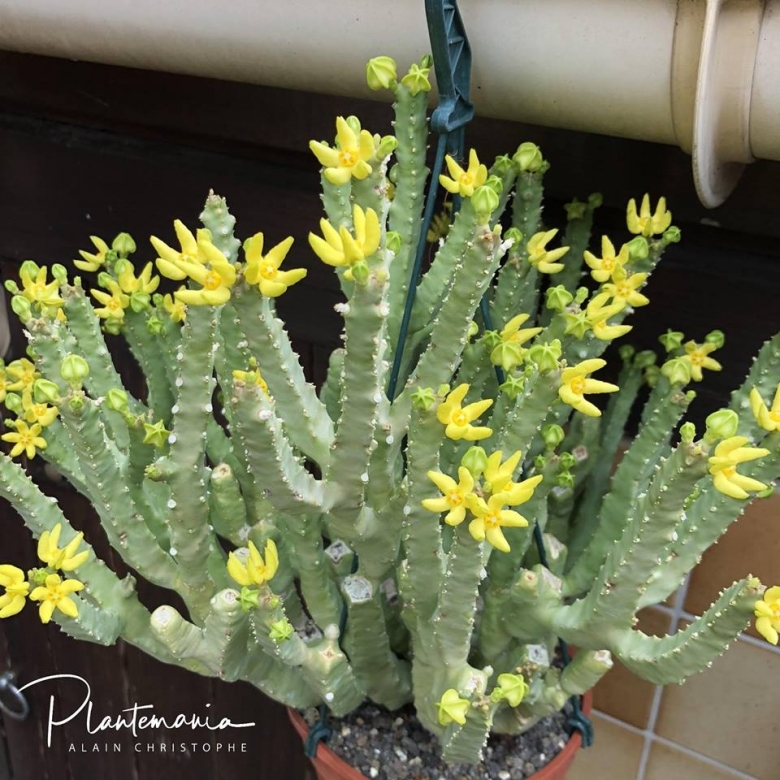
Desmidorchis quadrangula (Caralluma quadrangula) Photo by: © Plantemania
Synonyms:
See all synonyms of Caralluma quadrangula
back
Accepted name in llifle Database:Caralluma quadrangula (Forssk.) N.E.Br.Gard. Chron. III, 12: 278 1892.Synonymy: 9
back
Description: Caralluma quadrangula is a succulent bush, 25-40(-50) cm high, up to 80 cm broad with stems irregularly branched and compressed. It is unique on account of the solitary yellow flower in each inflorescence. Each flower is subtended by a minute acute bract and together these constitute an entire inflorescence.
Stems: 1-3 cm in diameter, green to brownish-green, erect, 4-angled, angles obtuse, blunt, tubercles indistinct, sides almost flat.
Inflorescence: Sessile close to the apices of the branches, 1-flowered, situated very slightly to the side of the leaf below it and so most probably occupies an extra-axillary position, as is usual among the Stapelieae.
Flowers: Greenish or lemon-coloured (rarely white or pinkish), with fruity-sweetish odour. Pedicel 6-7 mm long. Bracts solitary, acute, delicate. Corolla 12-13 mm in diameter, flat to slightly bowl-shaped, tube 2.5 mm long, deeply 5-cleft. Lobes more or less erect, ovate tapering, 6-12 mm long, margins recurved, inner surface pale yellow, smooth, bare. Limb small. Corona darker yellow than the corolla, long-stalked, surpassing the tube.
*Fruits: 5-18 cm cm long (extremely variable in length), 3-ribbed.
Related species: C. quadrangula is closely related to Caralluma cicatricosa. Both species have 1-flowered seemingly axillary inflorescences, extremely thick and short pedicels, a characteristic odour of the stems and 3-ridged fruits. But C. quadrangula differs especially in colour and the surface of the corolla which is smooth in the former and coarsely rugulose in the latter. They also differ markedly in scent: flowers of C. quadrangula have a strong sweet scent while those of C. cicatricosa are foetid.
Bibliography: Major references and further lectures
1) Focke Albers, Ulrich Meve “Illustrated Handbook of Succulent Plants: Asclepiadaceae” Volume 4 Springer, 2002
2) "Bradleya: Yearbook of the British Cactus and Succulent Society", The Society, 1990
3) "Bradleya: Yearbook of the British Cactus and Succulent Society", The Society, 1993
4) Hermann Jacobsen “Abromeitiella to Euphorbia” Blandford Press, 1960
5) Alain Campbell White, Boyd L. Sloane “The Stapelieae”, Volume 1 Typography and printing by S. E. Haselton at Abbey San Encino Press, 1937
6) Collenette “Flowers Saudi Arabia” 1985
7) Miller er al. “Plants of Dhofar” 1988
8) Stuart Max Walters “The European Garden Flora: A Manual for the Identification of Plants Cultivated in Europe, Both Out-of-doors and Under Glass”, Volume 6, Part 4 Cambridge University Press, 01 December 2000
9) Shahina A. Ghazanfar “Handbook of Arabian Medicinal Plants” CRC Press, 24 August 1994
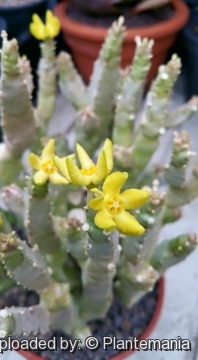 Desmidorchis quadrangula (Caralluma quadrangula) Photo by: © Plantemania
Desmidorchis quadrangula (Caralluma quadrangula) Photo by: © Plantemania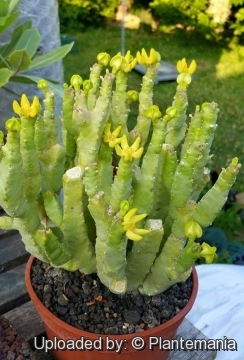 Desmidorchis quadrangula (Caralluma quadrangula) Photo by: © Plantemania
Desmidorchis quadrangula (Caralluma quadrangula) Photo by: © Plantemania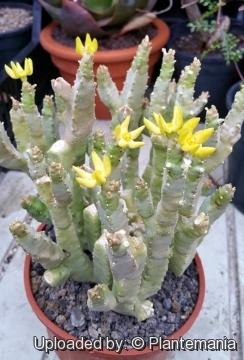 Desmidorchis quadrangula (Caralluma quadrangula) Photo by: © Plantemania
Desmidorchis quadrangula (Caralluma quadrangula) Photo by: © Plantemania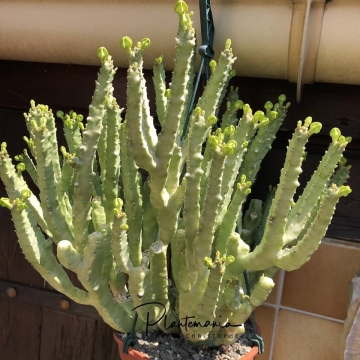 Desmidorchis quadrangula (Caralluma quadrangula) Photo by: © Plantemania
Desmidorchis quadrangula (Caralluma quadrangula) Photo by: © PlantemaniaCultivation and Propagation: Caralluma quadrangulaSN|33557]]SN|33557]] is xerophytic and adapted to dry soils, but despite its provenance it is without doubt an easy species to grow and not difficult as commonly supposed.
Growth rate: It is a relatively rapidly growing and easily flowering species that will make large clumps given the best conditions. Most plants will offset readily, and clumps can be produced in a few years.
Soils: It likes very porous mineral cactus mix soil, but can become too elongated if compost is too rich.
Repotting: This plant needs plenty of space for its roots, repotting should be done every other year or when the it has outgrown its pot. Use pot with good drainage.
Watering: It needs regular watering, especially during the hottest summer days; provide also some light watering if the green house temperatures in winter are elevated. Either excessive or very scarce watering can induce rot.
Fertilization: Feed with a high potassium fertilizer in summer.
Frost Tolerance: Reputedly resistant to light frost if kept on the dry side prior to, and during, cold weather (hardy to -2 C ° C, or less for short periods), but for safe cultivation it is best to avoid freezing temperatures. In the rest period no high atmospheric humidity!!
Sun Exposure: Best for half-shade but grow well in full sun too. Tends to bronze in strong light, which encourages flowering, but is likely to suffer from sun scorch or stunted growth if over exposed to direct sunlight during the hottest part of the day in summer.
Uses: It is an excellent plant for container growing. It look fine in a cold greenhouse and frame or outdoor in a rockery.
Traditional uses: Fresh, stems, flowers and young fruits of Caralluma quadrangulaSN|33557]]SN|33557]] are edible. However, the succulent stems become bitter towards the lower end.
Propagation: Seeds and cuttings. Cuttings will root only in hot weather. Cuttings must be kept very dry to root. Seeds germinate readily if they are sown when fresh.














